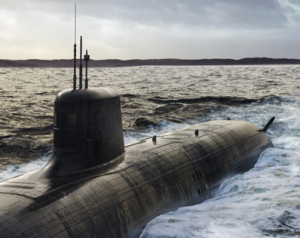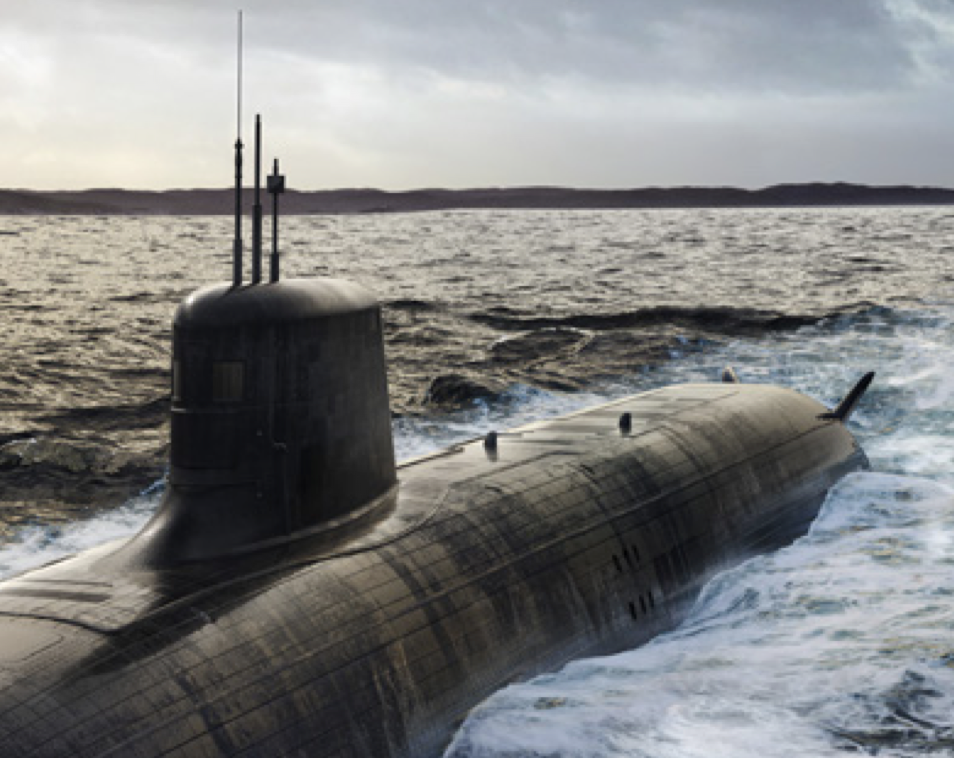Increased Chinese naval power and assertiveness – particularly in the South China Sea – has convinced the Australian government that it requires nuclear-powered submarines (SSNs) capable of operating far from home bases, both as a deterrent and for attack capability in the event of a crisis. The current fleet of Collins class conventional submarines are expected to lose their edge from the 2030s.
A combination of UK submarine design and US defence technology will contribute to the development of the new SSN-Aukus submarine – intended as the future attack submarine for both the UK and Australia. Both Australia and the UK intend to start building SSN-Aukus submarines in their domestic shipyards before the end of this decade. The first such boat may enter into UK service in the late 2030s, but the Australian navy will receive its first Australian-built SSN-Aukus submarine in the early 2040s. Guardian
Over the past 18 months, Australia, the United Kingdom and the United States have worked together to determine the Optimal Pathway for Australia to acquire SSNs. All three AUKUS partners have dedicated significant effort and resources to this work. A Joint Steering Group made up of senior officials from all three countries met 12 times between December 2021 and February 2023. The Joint Steering Group examined the full suite of options for Australia’s SSN acquisition, assessing the opportunities, risks and requirements of each.
Based on the work of the Joint Steering Group, AUKUS partners have identified a phased Pathway that delivers a sovereign Australian SSN capability as early as the early 2030s. The Pathway will see the construction and delivery of SSN-AUKUS as an enduring SSN capability for Australia and the UK – incorporating technology from all three nations, including cutting edge US submarine technologies.
This Pathway includes:
- Beginning in 2023, Australian military and civilian personnel will embed with the UK Royal Navy, the US Navy and – subject to any necessary arrangements – with UK and US submarine industrial bases.
- Beginning in 2023 and 2026 respectively, the US and UK will increase SSN port visits to Australia.
- As early as 2027, UK and US SSNs plan to establish a rotational presence in Western Australia.
- Pending US Congressional approval, from the early 2030s the US intends to sell Australia three Virginia class submarines, with the potential to sell up to two more if needed. This will ensure there is no capability gap during the retirement of Australia’s existing diesel-electric submarine fleet.
Importantly, the Pathway includes milestones for Australia to establish the capabilities to safely operate and steward SSNs. The UK and the US will use their extensive experience in safely constructing, operating, maintaining and disposing of SSNs to assist Australia in achieving those milestones.
The Pathway will develop Australia’s capacity to achieve the ‘sovereign ready’ milestone to safely and responsibly own, operate, maintain and regulate a sovereign SSN capability. The phases of the Pathway will enhance trilateral undersea presence in the region in the near term, and will build this ‘sovereign ready’ capability over time.

Ultimately, the Pathway will provide Australia with the capacity to build and deliver its enduring nuclear-powered submarine capability – the SSN-AUKUS. SSN-AUKUS will be the future submarine for both Australia and the UK, with the technology developed from and integrated into this platform benefitting all AUKUS partners. Australia and the UK will begin to build SSN-AUKUS in their domestic shipyards before the end of this decade. The UK intends to deliver its first SSN-AUKUS as early as the late 2030s. Australia plans to deliver the first Australian-built SSN-AUKUS in the early 2040s.
The first major initiative of AUKUS was the US’s historic trilateral decision to support Australia acquiring conventionally-armed, nuclear-powered submarines. Today, we announce our pathway to achieve this critical capability.
In order to deliver conventionally-armed, nuclear-powered submarines to Australia at the earliest possible date, we intend to pursue the following phased approach, moving through each phase based on mutual commitments from each nation:
- Beginning in 2023, Australian military and civilian personnel will embed with the U.S. Navy, the Royal Navy, and in the United States and United Kingdom submarine industrial bases to accelerate the training of Australian personnel. The United States plans to increase SSN port visits to Australia beginning in 2023, with Australian sailors joining U.S. crews for training and development; the United Kingdom will increase visits to Australia beginning in 2026.
- As early as 2027, the United States and United Kingdom plan to begin forward rotations of SSNs to Australia to accelerate the development of the Australian naval personnel, workforce, infrastructure and regulatory system necessary to establish a sovereign SSN capability.
- Starting in the early 2030s, pending Congressional approval, the United States intends to sell Australia three Virginia class submarines, with the potential to sell up to two more if needed. This step will systematically grow Australia’s sovereign SSN capability and support capacity.
- In the late 2030s, the United Kingdom will deliver its first SSN-AUKUS to the Royal Navy. Australia will deliver the first SSN-AUKUS built in Australia to the Royal Australian Navy in the early 2040s.
This plan is designed to support Australia’s development of the infrastructure, technical capabilities, industry and human capital necessary to produce, maintain, operate, and steward a sovereign fleet of conventionally-armed, nuclear-powered submarines. Australia is fully committed to responsible stewardship of naval nuclear propulsion technology and the global nuclear non-proliferation regime.
The plan elevates all three nations’ industrial capacity to produce and sustain interoperable nuclear-powered submarines for decades to come, expands the partoes’ individual and collective undersea presence in the Indo-Pacific, and contributes to global security and stability. In these outcomes, AUKUS reflects the principle that shared action, taken in partnership, can benefit all.
Implementing AUKUS will also require robust, novel information sharing and technology cooperation. Our nations are committed to further trilateral collaboration that will strengthen our joint capabilities, enhance our information and technology sharing, and integrate our industrial bases and supply chains while strengthening the security regimes of each nation.
